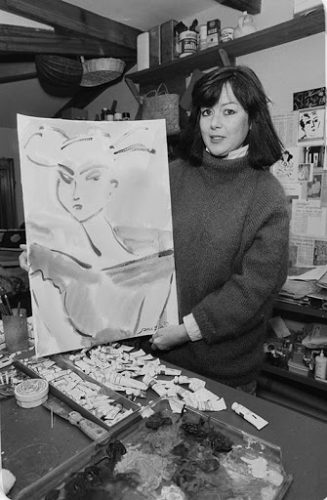Jane Evans
New Zealand, 1946–2012
Summer Siesta 1982
acrylic on canvas, 1210 x 1510 mm
Collection of The Suter Art Gallery Te Aratoi o Whakatū: gifted by the Goodman Group in 1984. ACC: 725.
The story goes that Jane Evans was commissioned to produce a painting for the food conglomerate Goodman Group (now Goodman Fielder), but the resulting work, with its reclining woman languidly at rest in the heat of the day, was too distracting for the intended boardroom location so it was rejected by the company chairman. However, the painting was championed by another board member and thus it came to be purchased by the group and presented to The Suter.
The commission allowed Evans to think big. She developed a dynamic composition of skewed table top, walls and floor, with areas of golden light streaming through the window. There is an interesting tension created by combining more fully described elements, such as the woman, chaise longue and vase of flowers, with objects merely suggested by deft outlines – the fruit basket, chair and a horse ornament.
Artist and biographer John Coley said of her art, that it “speaks directly to the senses, celebrating the pleasures of life, warm days, the colour and fragrance of flowers…the forms and hues of familiar objects”.
ArtWalk features three works by Jane Evans – Ladies Day, Saturday Afternoon I, and Summer Siesta.




